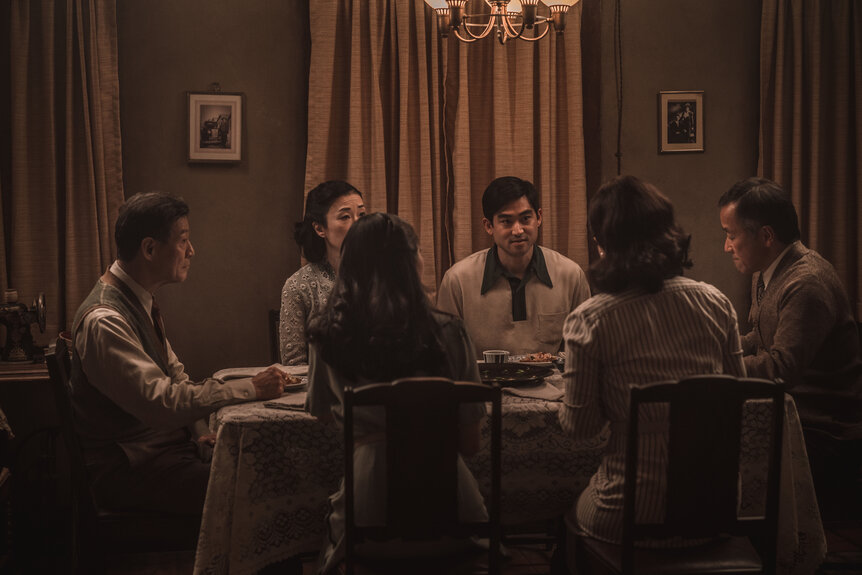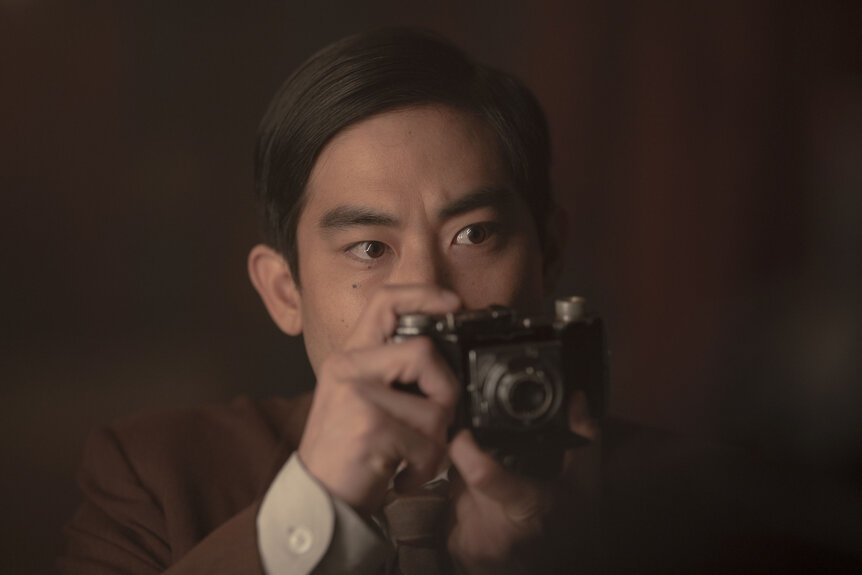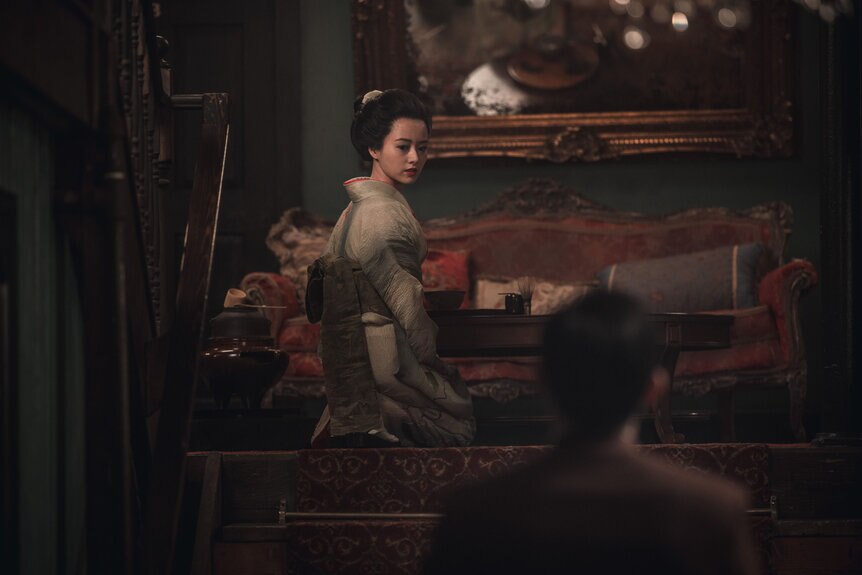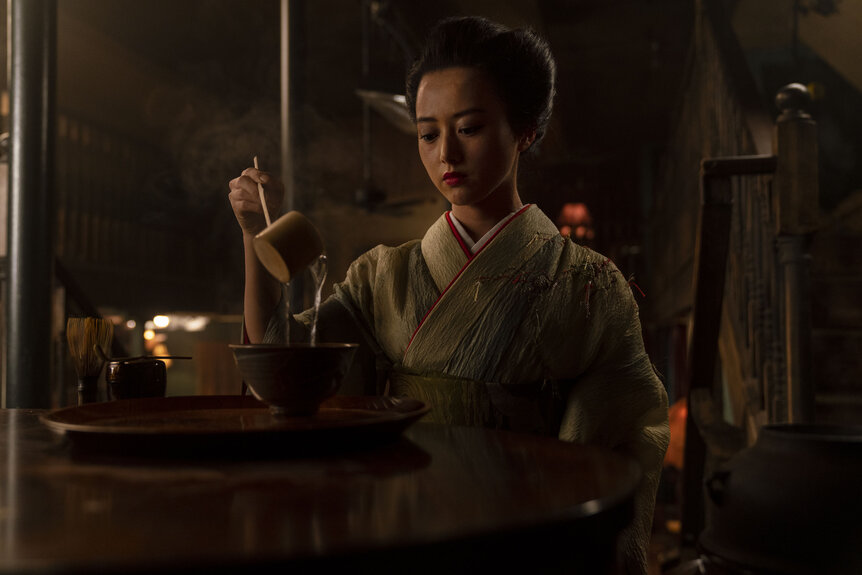Create a free profile to get unlimited access to exclusive videos, sweepstakes, and more!
After the Episode: The Terror EP and cast reveal secrets of 'A Sparrow in a Swallow's Nest'
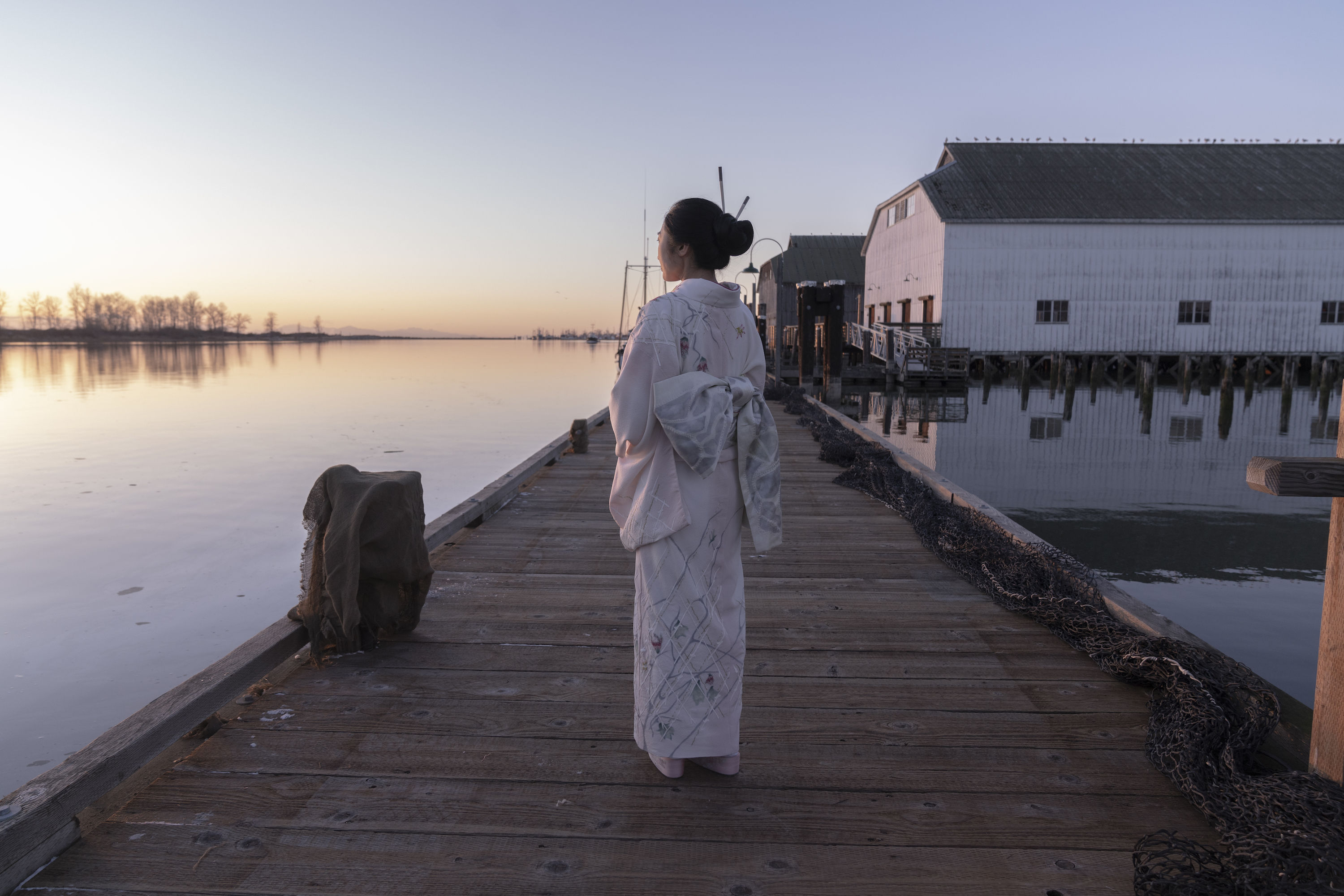
In “A Sparrow in a Swallow’s Nest,” the stage is set for the brand-new season of The Terror. This completely different story set in post-Pearl Harbor America shifts the mythology from the bleak Arctic to the bleak reality of the plight of Japanese Americans as World War II begins.
As we did with Season 1, SYFY WIRE will have exclusive interviews with the creative team of The Terror: Infamy, including executive producer Alexander Woo and his cast and crew throughout the season to get the deeper stories behind how select episodes of the 10-episode season were made.
**SPOILER WARNING! Spoilers below for the first episode of The Terror: Infamy!**
In the premiere episode, audiences are introduced to the Nakayama family of Terminal Island, California. Henry (Shingo Usami) and his wife, Asako (Naoko Mori), are Japanese-born immigrants, or Issei, in America, while their son, Chester (Derek Mio), is American-born, or Nisei. Already weathering a widening generation gap, the pilot ably lays out the traditional and supernatural ties to the Old World, which Chester rejects yet finds himself entwined within when he meets the tea reader Yuko (Kiki Sukezane).
On the bleak open, where we witness community healer Masayo Furuya (Yuki Morita) commit suicide, setting a chilling stage:Alex Woo, Executive Producer/Showrunner: [That scene] was something that we wanted from the start. It was a calling card for the show, poetic and lovely, but at the same time horrifying, and creepy and unsettling. It sets the tone for the entire show and establishes that the show has a visual language.
It was maybe the first scene that I had conceived. I was having coffee. In fact, I was interviewing our researcher, Danielle Roderick. We were talking and I said I want something really horrifying, like she sticks a hair stick in her ear. Just as a placeholder. But we really were never able to come up with anything better than that. (Laughs)
The sound design is also a crucial component of that [scene]. So much of it is in what you hear as much as what you see. There's two big components. One is our composer, Mark Korven, who is maybe best known for his work in The Witch, which I thought was just a virtuosic score. He was a unanimous choice between myself and Josef (Kubota Wladyka), our director, and Tony Tost, our co-EP. We all thought, "We have to get the guy from The Witch," because it's such a subjective score. What I mean by that is, rather than providing an orchestral backdrop for what's happening visually onscreen, it takes you inside the characters and is an aural evocation of what the characters are going through. And sometimes that doesn't even sound really like music. When people are in a very disturbed state of mind, it doesn't always come out very composed, and we wanted to establish that from the start, as you see in that opening scene. The score gets more and more upsetting and disturbed the further and further Masayo goes down that dock.
From the sound design standpoint, our sound designers did a remarkable job of building the world, which seems to be very peaceful in the moment, but then we're going, literally, into the head of the character. To me, it was very important for the sound to completely cut out when she sticks the hair stake in her ear, because it punctures the eardrum for one, but also kills her. She doesn't hear anything, so it just goes to dead silence. So rather than have the score punctuate the moment from the outside, the score is simply, very subjectively, from the inside, and the moment she dies, she doesn't hear anything.
On creating the reality of the Terminal Island community and the look of the series:
George Takei, Yamato-san and Series Consultant: We [shot] sequential. We have Terminal Island right here in L.A. Harbor, but we found a bitter cold place [in Canada]. That’s where we did the first funeral scene. At least we had decent clothes. When we were in the detention camp, the clothes didn’t protect us. We were literally shivering. People better believe those shivers!
J.R. Hawbaker, Costume Designer: We had a really tight approach between all of our departments, because the horror genre ends up being all about compelling images on camera. But also, it's an emotional, psychological context that's built up by having the music, the characters, the storyline, and the visuals affecting your psyche. Alex really helped shepherd all of us being in tight communication together. Josef (Kubota Wladyka), our director, would have color-palette meetings where we would just come in and speak about the emotion of the colors, and where we were going to highlight certain colors and emotional context to heighten the psychology of that scene. [Director of Photography] John Conroy had us do color tests that were really informative and, because of his keen eye, I knew texture was going to be really important in the way he wanted to shoot this, and to create textures that might feel, subconsciously, like scars.
On how the costumes created the visual separation of generations:
J.R. Hawbaker: Chester is actually slightly composited on Toyo Miyatake, who was an incredible Japanese photographer inside the camps. He goes right up alongside Dorothea Lange, Clem Albers, all of them, but is less known outside of the Japanese community. Toyo Miyatake has some of the most expressive, heartfelt imagery from inside the camps because he was inside the camp.
Between Henry and Chester, they're basically personifying these generations: the Issei and the the Nisei. With Derek, we really wanted a landing point for the audience to feel like they weren't that much different. Even though visually he still looks like his father, what he's wearing is very much Americanized sportswear. He has denim. We found the plaid jacket with the leather sleeves that you see him wear so often. We found that in a Sears catalog in 1943, and we had that made exactly the same. But we chose that because most of what he wears is indicative of this next generation that's assimilating and taking on the American experience for their own.
Derek Mio, Chester Nakayama: The fittings were such an interesting process with J.R. because she would tell me the way you wore a hat informed what kind of mood or attitude you had. You know, whether the brim was a little lower, or if it was a little higher. That was really interesting, just how something as simple as a hat can inform your character. I tried to be conscious of that whatever I was wearing.
On the traditional look of Yuko in the scene where Hideo Furuya (Eiji Inoue) loses his sight:
J.R. Hawbaker: The first time you see Yuko, there is an obi tie called the drum that was very popular at the time, and that would have been the most ubiquitous obi you would have seen. The fact that she's not wearing that should already be a slight indicator.
On quickly selling Chester and Luz’s relationship:
Derek Mio: We had some rehearsals with our first director at the beginning of filming, so we were able to talk about these things: How much do they love each other, and what's their backstory? [Showing that] was very, very challenging, and I kept having to ask people, "Was it that good?", because it's such an important moment in such an important relationship. It's difficult when it's the first time that you see them together and you just want to establish them right off the bat.
On the ghost on the pier behind Chester and Amy (Miki Ishikawa):
Alex Woo: I wanted to plant the show with a few easter eggs for fans of the genre. But also, it’s a stylistic feature of the genre in that the camera is not always on the horror. The camera is where it is, and the horror could be just floating in the back. Chester and Amy are not aware of it, but there's something over at the other end of that dock. This is early on in the show, you don't know who it is, or what it is, but the fact that there is something or someone who is following them is something that for the viewer, hopefully, is not just a delightful homage to the genre but gives you the feeling that there is something going on.
On Chester seeking answers from Yuko in the brothel:
Alex Woo: Chester is crossing the transom from his Americanness to a Japanese [world] that is still quite exotic to him. I think Yuko knows that. That she could manipulate him a little bit more by playing into exoticism. The thing that I remember most of all from that [scene] is it was really our first chance to see Kiki at work and how just mesmerizing she is. I don't speak Japanese, so I didn't understand what she was saying, but you felt this magnetism from Yuko. That was the day we knew we had something really special with that actress and that character. She doesn't have to say all that much, even. Yuko, as far as he knows, she's a person, is strangely alluring and he doesn't know why he's drawn to her. Kiki brought that just from the very first moment, so we were really, really lucky.
J.R. Hawbaker: I came away from talking to Alex knowing that I did want to hit the tradition of the kimono. We actually ended up developing this fabric that Kiki wears in her yurei kimono. We developed it to have a slightly creped texture. It’s a homongi, traditional style, with an eba pattern on it. But we used the summer robe fabric, which is slightly diaphanous. And then, to infuse the horror genre on top of the kimono tradition, we made it crepe out, a little bit like dead skin. That’s special to The Terror because it was important to infuse the psychology and use the tradition of kimono, which is an amazing storytelling vehicle. Emotion, psychology, metaphors of history and symbolism, is all innate inside of kimono. It's a walking piece of art. And both the kimono and the horror genre know the power of creating atmosphere. And that was, for a costume designer, just delicious.
On the Pearl Harbor reveal:
Alex Woo: One of the things I wanted to hide was exactly how close we were to Pearl Harbor. Obviously, in all these people's minds they have no idea Pearl Harbor's coming. Chester is dealing with this pregnancy and that's the only thing he's concerned about, so when Pearl Harbor happens, it should come like a shot out of the blue. My initial idea for establishing Pearl Harbor was to open the scene where they're in the naval station after they discover Stan's body, and we pan across a newspaper, which is not the most artful thing you could do, but we did in fact shoot it. But what Josef and John Conroy, our DP, came up with was this shot of Chester and Henry talking. Way above them is this clock that says December 7th, set to the exact moment when the attack happened, and they have no idea, because the world is going on around them. That was a shot that creatively and aesthetically so far exceeded what I could have come up with in my own head, and is a great example of the collaboration of all of our design team and camera department.
On the government rounding up the Japanese elders:
Derek Mio: In the research for this, I went straight to my family. My aunt is still alive, and my grandfather’s sister. Also, I’ve done research online just trying to dig up any stories. There’s actually testimonials of Terminal Islanders — a preservation project online. I came across some interviews of my great-grandmother, and of my aunt as well. One of these stories is about that very night, and the very scene where the elders of Terminal Island are being rounded up. I find this interview that my aunt gave about my grandfather. When the FBI came, my great-grandfather was a community leader, so they took him away in the middle of the night, and my grandfather was pleading with them to take him instead. When we shot that scene, it was hands down the most emotional experience I’ve ever had acting.
On the horrifying reveal of Yuko at the end:
Alex Woo: The sewing of the face scene at the end is simultaneously horrifying and upsetting, but also a little bit of an echo of the first scene where you see Masayo at the makeup table. Yuko is sitting at the table doing something that is at first lovely and then horrifying and hopefully raises some questions about who she is and what she is.
New episodes of The Terror: Infamy air Mondays at 9 p.m. ET on AMC.
